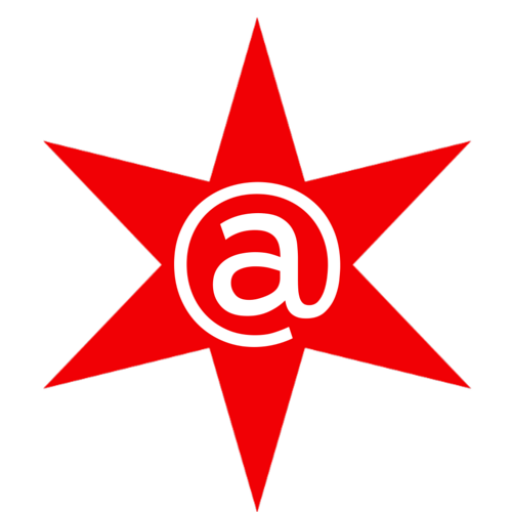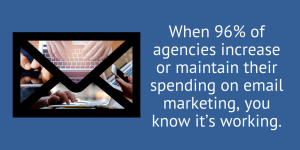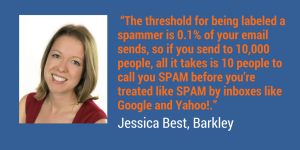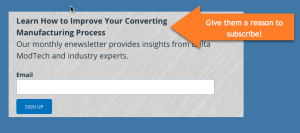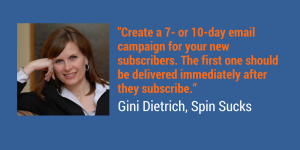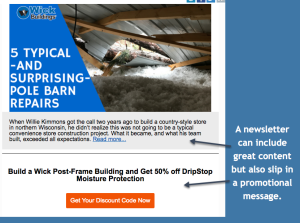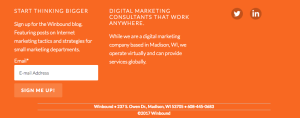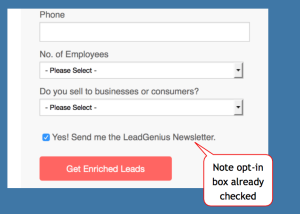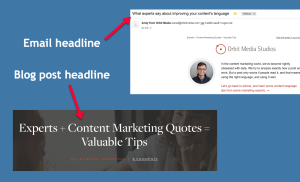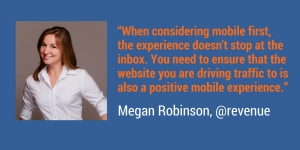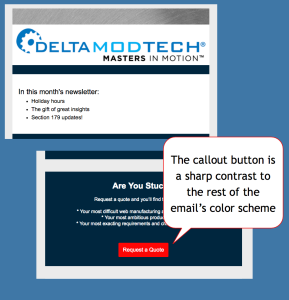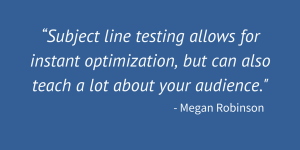Demystifying Marketing Myths
Demystifying Marketing Myths

In a world with “alternative facts” and the ability to make your own truth, there is a lot of miss-information out there. @revenue is here to shed light and truth on some of the most common marketing myths and why they just aren’t facts. These misconceptions are dangerous and can seriously impact your business.
Marketing Myth #1: My business is so incredibly unique, it is too complex for anyone outside of our firm to communicate.
Why it’s false: Look, no marketer will ever be able to know your business better than you, but do you know what they are experts at? Communicating with your audience. How you translate that expertise and unique offering to the masses to best connect and engage is critical for generating sales.
Marketing Myth #2: I received an email from someone who says he can get my site to page 1 on Google. For just $99!
Why it’s false: Really? Are you going to fall for that one? SEO takes time and is a long-term strategy. Don't fall for some cheap tricks that may work today, but will leave you burned in the long run.
Marketing Myth #2.5: My cousin is an insta-star.
This goes right next to “the millennial on the team will do social media.” Leaving your brand, reputation, and marketing strategy to someone that knows how to use a tool is not enough. They need to have a strategy, plan and know how to generate ROI, not “likes”, from their efforts.
Marketing Myth #3: It doesn't need any marketing, really. It sells itself.
Why it’s false: Nothing sells itself. Even Apple's greatest products require the right placement at the right time communicated by the right people to the right audience.
Marketing Myth #4: The client is always right.
Why it’s false: I get it, we are in the service industry, but really? How does this develop trust and good recommendations? If the client was always right, why are they asking for help? Because they tried something one way and it didn't work perhaps? So, let's stop putting them on high platforms as always right and work with them as partners.
Marketing Myth #5: I don't need marketing to target my offering. Anybody and everybody can use my services.
Why it’s false: Because if anybody and everybody actually showed up at your doorstep tomorrow, you couldn't possibly service them anyway.
Marketing Myth #6: Word of mouth and a website is enough -
Why it’s false: Delivering quality, targeted and convertible traffic to your website takes a strategy, a budget, execution and some time. Don't wait for the pipeline to inevitably dry up. You need to be proactive instead of waiting by your inbox for a lead to come in.
Marketing Myth #7: Facebook is the only valid way to get your message across to people anymore.
Why it’s false: HA! That’s like saying, “The only way to get protein is to eat a lot of eggs.” There are TONS of channels, groups, mediums and tools to get your message across. If you believe this, you might be a little narrow-minded. Let an experienced marketer show you some solutions.
We all know first hand how annoying it can be to get the same assumption and miss-information driving networking conversations and sales calls. For many experienced professionals, they never had the opportunity to learn about marketing, so they get bad information from the internet, sleazy marketers pumping out misinformation that they take as truth. If you have a question or assumption about marketing, contact @revenue to explain more.
How to Do Email Marketing Effectively When You’re a Small Marketing Department
How to Do Email Marketing Effectively When You're a Small Marketing Department

If you want to learn how to do email marketing effectively, then understand there is no one thing that will ensure success. It’s a balance of strategy, techniques and execution. Here is an overview specifically designed for 1- to 3-person marketing departments.
Email is such an ubiquitous part of our lives that it’s often overlooked by marketers. There are bigger, shinier strategies and tactics that always seem to command the lion’s share of attention.
But email marketing should be an integral part of your approach — the numbers say it’s the most important. Let’s shed some light on why email is so critical, and the steps a small marketing department can take to make your approach effective.
For this post, I received some great insights from folks who really know their email marketing (listed in order of appearance):
Jessica Best, Director of Data-Driven Marketing, Barkley
Gini Dietrich, Founder and author of Spin Sucks
Megan Robinson, VP Marketing of @revenue
How effective is email marketing?
Throughout this post, we’re going to use the word “effective.” That’s because “effective” is defined as “successful at producing a desired or intended result.” And that’s what this stuff called marketing is all about — results, right?
Consider some of the industry statistics that reveal how widespread email usage is, and how effective email marketing can be:
- According to Statista, a total of 96% of agencies were going to either increase (48%) or maintain (48%) their spending on email in 2017.
- The number of email users worldwide is expected to rise to 2.9 billion users by 2019, according to Statisa. (In comparison, there are 2 billion Facebook users as of Q3 2017.)
What do the numbers tell me? When 96% of agencies increase or maintain their spending on email marketing, you know it’s working. And when a medium is 2.9 times bigger than Facebook, that tells you that it is still the biggest game in town.
Effective strategies, tips and techniques for email marketing
In creating a post about how to do email marketing effectively, you can’t possibly include everything. What we’ve attempted to do in this post is focus on the critical elements a small marketing department should focus on; you can build on this to refine your approach.
1. Don’t buy a list — EVER
Let’s cross off the first thing that comes to many marketers’ minds: Should I buy a list of email addresses and email them?
According to Jessica Best, the answer is quite simple: NO. Besides this being ridiculously intrusive for the end user, you also run a big risk of being labeled a spammer by email service providers, which means you could be blacklisted and your emails will go NOWHERE.
(Read more from Jessica in What Email Marketers (Still) Don’t Know They Don’t Know.)
If you really want to build a list, provide content and information that is of value to the customer. Share with them how you’ll solve their problems. People want answers, not SPAM.
2. Don’t just say “subscribe” or “get updates”
How many websites have you seen that ask for your email for “updates,” but don’t tell you what you’ll get in return?
Be sure you give them a solid reason to sign up, especially telling them the frequency of the emails. People like to get their Sunday morning paper on Sunday, after all. (I’m referring to newspapers – do people get newspapers anymore?)
3. If you automate, use “value forward” content to aid in the buying decision and stay in front of prospects
If someone signed up for an email, it’s likely that they are in the early stages of the buying process. You can use automation to set up a string of emails that will go out right after someone signs up for a download.
However, these emails need to be “value forward,” as Jessica Best puts it. Sure you can sell product, but think about your customer and their buying process. What would add value to their decision? Knowing more about you? Seeing customer reviews, or comparisons to your competition?
Any types of follow-ups should lead them through their Customer Journey, ultimately to a purchase. But you have to present something of value each step of the way.
You also can’t wait to follow up, as Gini Dietrich tells us:
A good majority of organizations have an email sign-up on their site without a single email that follows. Sure, you may send a monthly email, but what if that’s 29 days from now? Will the person remember who you are 29 days from now? It’s doubtful. Create a 7- or 10-day email campaign for your new subscribers. The first one should be delivered immediately after they subscribe.
4. Segment your list and personalize your messages
Different offers on your website can mean different things. Create different email lists based on the reason why people signed up. Do they just want to read your new blog posts? Are they interested in buying your product or service?
If you have different segments, you can tailor your emails to those segments. For a small marketing department, this is the first step toward speaking directly to what your target needs.
Segmentation is different than personalization, as noted in this great post by Jason Grunberg, who explains the difference between personalization and segmentation.
True personalization, beyond just inserting a contact’s name, involves delivering email content based on a client’s past actions, as explained by Active Campaign’s Brian Gadu in this post. Ultimately, this improves your deliverability and your standing in the eyes of email providers.
Grunberg and Gadu both indicate that personalized emails (one version for one person) are going to overtake grouped segmented emails.
For a small marketing department, this granularity should be the ultimate goal, but it won’t happen overnight. Start by segmenting your list, then work toward personalization.
(Check out more examples in Jessica’s post on 6 Steps to Putting Data to Work in Email Marketing.)
5. Let unsubscribe rates dictate how much you should send
A common question among marketers: How much email is too much? We’re all inundated with email, and you want to be sure your email gets opened and that you’re not annoying.
Whatever you do, don’t make your decision based on what YOU think is too much. Let your prospects make the decision.
You can do this by focusing on your unsubscribe rate. You want your unsubscribe rates to be below 1% of your list. If your rates creep north of that number, it’s time to reevaluate your content and the rate at which you’re emailing.
6. Use your blog content to make an eNewsletter
Creating a monthly eNewsletter can produce numerous benefits. As Megan Robinson of @revenue details in this post (with stats to back up her point), those benefits include:
- Keeps your business top of mind
- Engages your audience
- Deepens your relationship with customers
But sending out regular emails — at the very least, once a month — can seem tedious if you’re trying to create new content all the time.
One method that’s effective is to turn off the auto notification from your blog, and instead route sign-ups to a special list on your email service. Then, once a month, compile your blog posts into a newsletter and send it to prospects.
It’s a great way to share content for prospects just entering the sales funnel, or add in some new product promos to keep them posted on new sales.
7. Deliver your downloadable offer via email
Let’s say you’re providing a piece of content for a visitor to download, like a PDF guide. Should you make that available on a thank you page, after the person signs up for the offer?
Jessica recommends sending it out via your follow-up email. The recipient is very likely to open and engage with your email, and that helps Google recognize that the recipient wants your content. They’ll more likely “green light” your future emails, so always deliver your offers by email!
8. Build your list using different techniques
There are a million ways to build your list, but here are a few that have proven effective for us:
Feature a downloadable offer with a sign-up form as well: Many will argue that all your content should be ungated, but Jessica believes that you still should have lead forms in front of a valuable piece. “As long as it’s valuable, it doesn’t cost that person a whole lot to give up their email in exchange for the content,” she said.
Co-Op/Ad Swap: Partner with a relevant/complementary business or product. Create an email for a partner or complementary business. They will mail your message to their email list, then you respond in-kind.
These are just foundational suggestions. To really drive email sign-ups, check out this amazing post from Robbie Richards.
9. Feature an email sign-up in your website’s footer
We get a surprising amount of sign-ups with our email subscriber box in the footer, and it’s pretty logical when you think about it. A person reads the page, likes the content, and when they scroll to the bottom, BLAM, you’ve got the sign-up form.
Because it’s in the footer, you also have an automatic guarantee it’s on every page of your site.
10. Include an opt-in checkbox on your contact form
Besides the sign-up forms on your site, you can also add an opt-in checkbox to your contact forms. You may think these people want info. right away, but this gives you a method to follow up with them and keep them on the list. It also puts them in control of whether or not they want to receive more information.
(Opt-in form courtesy of Pinpointe.com.)
11. Control when notifications are sent out about a new blog post
When your developer sets up your blog subscription form, don’t use a plug-in from the content management system. Keep all of your subscribers in your email marketing platform so you can control when and how they see your latest.
Auto-notification plug-ins just grab the headline of your post and make it the headline of the article. But your article headline might not make for a good email headline, and you may also want to include a teaser message to your readers to get them to check it out.
Andy Crestodina does a great job with this. Notice his email has a headline written specifically for email. His blog post title, which likely includes very specific keywords and structure, probably would not be as effective.
12. Avoid getting labeled a SPAMMER
It’s very easy for someone to label you a SPAMMER, and as we touched on earlier, that’s someplace you definitely don’t want to go.
So how do you do it? First of all, play nice. Use common sense tactics not to SPAM. If someone gives you a business card at a lunch, that’s not an automatic OK to add them to your eNewsletter list. Send them the link to subscribe, and let them take it from there.
Some other tactics include:
Always include an unsubscribe link and a physical mailing address with your emails. Most email services will build this into your template, in compliance with CAN-SPAM law.
Be sure you’re sending from a professional SMTP server. Any email marketing platform like Active Campaign, MailChimp, Constant Contact will be compliant.
Easy on the images: Include enough text that a spam filter can “read” what your email is about. Too many images can get a can of SPAM thrown at you.
Avoid the SPAMMY words: Using these words in moderation won’t get you labeled a spammer, but too many can land you in trouble. Here’s a great list from Karen Rubin of HubSpot.
13. Ensure it’s mobile-friendly
Litmus’ Email Analytics tracks open emails from over 1.4 billion sent emails. They reported that emails opened on mobile devices was 56% of all emails sent. Make sure your emails, and the service you’re sending them from, are mobile-friendly!
Check out Megan’s article on Google’s Mobile First Initiative:
14. Create a great email – include excellent content
Oh yeah! That stuff. What you want to, you know, say to people. I guess that matters too, right?
Back in the days of direct mail, there was a 40-40-20 rule. Your success was determined by: 40% by the list; 40% by the offer; and 20% by the creative. Here’s a great post by Eunice Brownlee that refines that formula for email marketing today, but essentially the idea remains the same.
So what makes for an effective email?
Focus on the subject line: If you want people to get into your email, you need to open that front door. So create an excellent subject line. Check out insights from Charlie Meyerson on how to do it right!
Keep it short and focused: You want a clear intent with your email, and you want someone to take an action as a result of it. Keep your content skimmable; 1-3 lines of copy, and avoid the bulky paragraphs.
These shorter segments can then link out to longer content.
“One of the biggest mistakes people make with email is sending all of the content in the email. Don’t do that! It doesn’t encourage engagement, nor can you track effectiveness,” says Gini Dietrich.
“And always remember: Your email content is about THEM, not you. No one cares about your new hires, your new contracts, or your awards. What they do care about is how you can help them.”
15. Make Call-To-Action prominent
You want to take them somewhere, give them a big, bold CTA. And use a contrasting color, so it really stands out.
16. Metrics: How do you measure email marketing success
Here are the big ones we really keep an eye on:
Click-through rates: Really, at the end of the day, it’s all about sales, right? So you’d ultimately want to see how many people are clicking through to your site. Open rates are great and could potentially generate some brand equity, but you want people to get to your site.
If you can track the email traffic all the way to a conversion in the form of a lead or purchase, that’s the ultimate goal!
Unsubscribe rates: You definitely don’t want that number to incline. It’s a good indication you’re either sending out too frequently, or your content quality is off. According to Jessica Best, the average unsubscribe rate is .5%, and just make sure you don’t creep north of 1%.
Track through UTM tagging: This isn’t a metric, but a methodology to track your email visits from Google analytics. If you don’t use UTM tagging on your links, then GA will count the visit as “Direct” and not an email.
17. Test, test and test some more
Hate to date myself (someone’s got to), but when I was writing direct mail copy for a big insurance company, we would roll out $10,000 tests on a changed headline. That’s still done today, but with email, you can make instant changes and improve your open rate.
Megan Robinson digs deeper into the subject for us:
Most email service providers have subject line testing already built in and can be one of the best ways to immediately improve your email. A/B Testing is when you send a percentage of your audience 2 different subject lines. After a predetermined time (~4 hours) the subject line that received the highest open rate within the test group will be sent automatically to the remaining audience.
Subject line testing allows for instant optimization, but can also teach a lot about your audience. Try testing with a specific hypothesis in mind. Does your audience like it when you use emojis? Are they more offer- or relationship-focused?”
Email marketing is a journey
Like everything in this digital marketing game, your success rate will be a function of time. No one expects you to hit it right out of the park, right from the start.
Use these foundations as your launchpad, then tap into the experts in this article to learn more and improve your efforts. Effective emails are all about results — follow these tips, techniques and strategies and you’ll be on your way.
For the original blog, click here.
Ensure 2018 Measures Up: What to watch, do and look for in your marketing
Ensure 2018 Measures Up: What to Watch, Do, and Look for in Your Marketing

With all the time, energy and money that goes into marketing, it’s critical you know what you are getting out of it. The team at @revenue put together our top tips and notes to ensure your 2018 marketing plan is measuring up.

Social Media
Successful social media is so much more than how many people like or follow you. The success is in building a community who interacts, shares and ultimately, buys. How do you know you're building a community?
- Go beyond vanity metrics (page views, number of followers). They may feel great, but the point of social media is to be SOCIAL!
- Carve out time in your calendar to engage and connect with those in your community. The more you engage, the more engagement you can expect from them.
- Monitor the actions people take on your content and the conversations people are having with you and one another. Leverage free tools like Facebook Insights, Twitter Analytics, Instagram for Business and LinkedIn post analytics to find more meaning in your measurement.
You can't just post articles and content, you have to connect and engage to be the most effective on social media. Connect with Sue Koch to identify the best ways to build your audience, respect your tribe and make sure to have fun with it for your needs!

Email metrics are widely available through your email service provider, but there are a couple of key things to keep your eye on. Ensure your email is as effective as possible by measuring, optimizing and improving key elements.
- Make sure your emails are getting read by monitoring your open rate. Try testing subject lines and your from line to optimize visibility. It doesn’t hurt to throw in an emoji here and there! ????
- Your next level of engagement are your clickers. All of your emails should have very specific calls to action that will engage your audience brings them that much closer to a sale. Be sure to make your email clickable by linking images, headlines and large buttons. The more options they have to click, the more clicks you get.
- Less common than clicking, some recipients will actually reply to your marketing email! This is much less frequent than just clicking but provides the highest level of engagement. Be sure to respond quickly and take advantage of the outreach.
You don't need the fanciest, most advanced email servicer to make a big impact in your marketing campaign. Talk with Megan Robinson today to effectively engage, connect, and rank your email list!

Search Engine Optimization
Getting on Google search's first page is the name of the game. We measure SEO success by our keyword rankings (the higher the better), volume of targeted traffic (the more the better), and the number of conversions on the site.
- SEO success is ultimately measured by how well your website ranks for specific keywords. Make sure you are looking for consistent improvement month over month and maintain your position.
- Although ranking well is important, we do it to get more website traffic. Be sure to monitor the traffic you receive and the quality of it. Is your bounce rate increasing? Is your time on the site getting shorter? Make sure that the traffic you are getting is of high quality.
- We not only want to rank well and get quality traffic to the site, but we also want to make sure that traffic is converting. Whether making a purchase, filling out a contact form or picking up the phone and making a call, visitor conversion is the ultimate goal and indicator of SEO success.

Networking
Effective networking is every bit as critical to your success as a solid digital presence. If you are sitting in your office relying solely on your website to fill your pipeline you will have a lot of really good opportunities to organize your office supplies! But how do you quantify effective networking? It takes some elbow grease but when you have an additional 30-50% of your leads coming from the relationships that you've built, you will be singing a different tune!
- Identify organizations that cater to your specific verticals or sizes of business. Associations should be a part of your research, not just Chambers of Commerce or high priced networking opportunities.
- Try it, track it, change it. You must have a system (CRM, spreadsheet or other) that allows you to track what your investment in the networking is. This includes travel time, time at events, follow up time, etc. Use your hourly rate to calculate your total investment and after 6 months compare that to the anticipated value of leads received. Check this number every six months.
- Keep in mind that Strategic Partners (those that can refer you LOTS of business) are often as valuable if not more than just one lead. These are the folks that you build deeper, long-term relationships with, invest your time and track the results. You will get a stronger ROI and create a more significant network than just hoping to get leads from events.
If you aren't tracking your results from networking, you are simply socializing. Make sure that you give your effort the proper value!
3 Reasons Why That Newsletter is So Important
3 Reasons Why That Newsletter is so Important

Email marketing can do a lot for small businesses. It helps nurture new leads, drives sales, promotes products and services, and builds loyalty. Notice how I mentioned more than just sales? That’s because marketing isn’t only about the bottom line, but contributing to the bottom line. Some email messages, such as promotions, are specifically designed to drive sales, but others, such as newsletters have other important functions.
Here are 3 things email newsletters do to help your business:
1. Keep your business top of mind. Newsletters are a great way to keep your business in the forefront of your customer’s mind by simply being there. Email is one of the most efficient and effective ways of getting your brand in front of your audience, and newsletters are a great and consistent way to get their attention.
57% of email subscribers spend
10-60 minutes browsing marketing emails during the week.
(Source: today willChoozOn)
Yes, we get a lot of emails, but we all spend time browsing, reviewing and evaluating them. Make sure your business has visibility where your customers are spending their time.
2. Engage your audience. Newsletters are great for customer engagement when they are full of information that customers want to read. Why would you want to engage your audience? The more engagement with your business, the more customers connect. The deeper that connection, the more likely they are to purchase.
63% of people requesting information on today will not purchase
for at least three months, and 20% will take more than 12 months to buy.
(Source: Marketing Donut)
Statistics like this reminds us that the customer journey is just that – a journey. Customers need time to make purchasing decisions. By engaging your audience through the purchase decision, you have a far better chance of them ultimately buying from you.
3. Deepen your relationship with customers. Newsletters are all about providing information to your customer. In our customer-centric environment, this communication is critical to help build the relationship. Plus, they are a great way to share your business values, differentiators and personality. Allowing your customers to learn more about you and your company improves loyalty and increases sales.
When asked which medium consumers would like to receive updates from,
90% preferred an email newsletter, while only 10% chose Facebook.
(Source: Nielsen Norman Group)
If good marketing is talking to the right audience, with the right message, at the right time, why not send a newsletter? The more connected the audience is, the more they begin to view your business less as a commodity and more as a partnership.
Newsletters are just one of the many different types of email marketing messages businesses can send. If you would like to learn more about email marketing and how it can help your business, contact our team today!
Stop relying on “Random Acts of Sales & Marketing”!
Stop Relying on "Random Acts of Sales & Marketing"!

Three weeks ago, Marie and I each had two prospect meetings. As we debriefed, it was as if we had the same meeting but on two different topics. Marie’s was marketing and mine was sales. In both cases what we heard was a lot of wishful thinking, and lots of money spent with virtually no real strategy, process, or plan to ensure 2017 is better than 2016. Guess what the 3 musts to success in sales and marketing are?
1. Strategy
My business partner, Marie uses the phrase ‘random acts of marketing’. I sure know what those look like and you might be doing some of them yourself. It’s that knee-jerk reaction to the so-called social selling craze. The MUST to be on Twitter, Periscope, Snapchat, etc. It’s the belief of “if I only had a better website, then they would call me.” Producing videos that don’t speak to the audience and futilely grasping at the latest and greatest. Or worst of all, handing over a fist full of cash to the nice guy in your networking group that convinced you he had the magic wand, but now you want to punch him every time you see him!
These investments rarely work and can almost always guarantee to be a waste of money, time, resources, emotions, and opportunity costs. Unfortunately, businesses run like this all the time and the ownership wonders why they struggle with market awareness, consistent messaging, and real Marketing Qualified Leads.
How do I fix it? Take the time to get QUALIFIED consultation and recommendations for strategy. Then, be sure to understand the strategy and make a commitment to follow through on the complete strategy. Marie has a hard and fast rule: it’s a no-go if it has to be done in under 6 weeks. That goes for a conference, an email campaign, or anything else that you want ROI from. We offer our clients strategy, implementation, ongoing execution, automation, and ultimately TRACKABLE and QUANTIFIABLE REVENUE. Isn’t that what marketing should be doing?

2. Process
I take tremendous pride in doing my job to the best of my ability, both selling and teaching sales. It makes me sad when I hear my profession be diminished and criticized. Then I quickly realize that we have no one to blame but ourselves because most salespeople are ill-equipped to succeed. They are often poorly trained (if at all), poorly led, poorly coached, poorly managed, and incentivized in horribly outdated ways.
Simply ask yourself, would you go to a dentist that wasn’t trained or had no plan? Send your kids to a teacher with no certificate? Trust a doctor, mechanic, jeweler, dry cleaner, or a pilot who is ‘winging it’?
Of course not! So what makes anyone think that you want to buy from an untrained and unprofessional sales person who lacked a process? What makes us think we should be selling when we’re not properly equipped with a process? Look, sales is a profession - one that should be respected and appreciated by those of us who sell (EVERYONE READING THIS) and those of us who buy (EVERYONE READING THIS). If you’re a lawyer, accountant, chiropractor, plumber, or any other professional service, stop your ‘random acts of sales’ and get trained to be the best you can at client acquisition.
3. Plan
Are you set for 2017? Do you expect 2017 to look like 2016 or does your plan insist that it will be better? Listen, don’t get caught looking back at the end of Q1 and see that you’ve done nothing new to ensure your success. Here are a few points to consider:
A. Is my networking really working or do I waste my time ‘net-eating’, ‘net-drinking’, and ‘net-chatting’? Networking needs to bring you ROI! If it doesn’t then stop, re-evaluate, and realign to a new group. If you need help, let me know.
B. Set very specific goals and then set the course to achieve them. There is nothing worse than being on the hamster wheel of business only to run and run but fail to advance.
What I want you to do now is simply decide: are you going to try something new and talk to with a successful sales and marketing team or do you want to forge ahead on your own? @Revenue offers a variety of training, education, and full consulting services. So the real question is: are you failing to plan, or planning to fail?
The 5 MUSTS to Consider for your new CRM
The 5 MUSTS to Consider for your new CRM
After more than 10 years of selecting and implementing CRMs for my small business clients I have seen more than my share of struggle, strife and stress when it comes to these tricky systems. We have experienced programming across 14 different platforms and at the end of the day it is basically the same gears and pulleys and what you are truly selecting are systems integrations and the interface. So how is a business owner to choose the right one and set it up for success? Let me share our hottest tips:
1. Align to how your company thinks.
Every organization has technology and systems plugged in long before they start thinking CRM. Heed this advice: Pick the CRM that most closely aligns with the tech you already use! If you are an Apple shop do not pick Microsoft's most recommended CRM! If you are Google based, use a product that was designed to integrate (I recommend Insightly).
2. Start with the end in mind.
If you are attempting to program your system yourself, the easiest way is to identify what reports are going to be most valuable for your organization. Do you need to track how long it takes a digital suspect to become a qualified prospect? Do you need to hyperfocus on the usage of your website by current clients? A little brainstorming about the results will allow you to create a map that truly works.
3. Get out of your head.
Creating a map that you can look at and play with OUTSIDE of your own head or in the system itself is critical. Map out the flow of how a prospect flows through the system, which drip marketing campaign it gets added to, and what activity sets need to automate to get them effectively in the pipeline. This kinesthetic, visual exercise will give you the clarity you need to set the program up right.
4. Be dedicated.
I hate to break this to you but, except to a few geeks like me, CRMs are not sexy. Your staff is not going to be salivating to learn a new and complex system that can feel like busy work. As a leader, you must be 100% engaged with the system and be the example your team can look to. Log in daily. Get excited about the automations and reports. Geek out...and show them the power of systems.
5. Create a training and engagement plan.
Your team will need you to educate them, over and over again, about the power and functionality of your CRM. Create a training schedule, incentive program and stick to it! Think of it like dating. You want to introduce them to each other, and let them go on a few dates before they start seeing each other every day. And, once they are married to it, sometimes it helps to find something to reignite the spark. If you are a soloprenuer then make a date with yourself to keep engaged!
Your CRM can help you automate activity, track the true numbers and bolster sales, but it's going to take some love and time in the beginning. @revenue offers assistance with selection, mapping, programming, training and more! Enlist an expert today, we are just a phone call away! 630-631-7713
Facilitating Powerful Networking Events
Facilitating Powerful Networking Events
After facilitating high-level networking groups for a decade, I must say, I LOVE THEM. Why, because I control the environment to ensure success. That might sound arrogant or "controlling" but it's not, it's what's needed.
A few tips about running great networking events are:
1. Facilitate your own so you can set the tone.
I run lunches that have 8 members that come every month.
Each member commits, on a contract, to be there every month with a decision maker level or deeply networked guest. We spend 1.5 hours in a highly structured but fun environment getting to know one another's business. And before I close the lunch, I ask EVERY attendee to publicly announce with whom they can help and how.
I've personally generated Hundreds of Thousands of dollars from these events over the years.
2. Host as few drinking events as you can.
I always tell my clients that they need to understand, "networking is work. It's not net-drinking, it's networking!" These events rarely result in a return on the investment of time and effort. If you’re going to have one, host it as a party more than a networking event.
Having said that, a nice structured dinner and wine event from time to time is always nice for those clients/contacts that will appreciate them.
3. Be picky about who attends.
There is not always strength in numbers. I recommend “purposeful networking”. Think about who you want to invite and then scrub your network to find purposeful guests. This is an instant winner for your attendees and sets you apart as a force in the networking world.
A few tips when attending an event.
4. Have a plan before the event.
With whom do you want to spend time? Recruiters, business owners, accountants, etc. Be purposeful about how you execute your plan by focusing your time on the right people that you can help and that can help you.
5. Go to give.
Don't go with the mindset of "I'm going to find business today". Instead, go with a determination to enhance others networks by making strong connections. This mentality will set you apart from many at the event. And I guarantee, if you go with that mindset, business will come and you will not be disappointed.
6. Understand that networking is not a leads group.
Many people attend events with skewed expectations. Networking is about identifying strong likable people to whom you want to open your network and who want to reciprocate for you. This can take a follow-up call, a personal 1:1 meeting and a concerted effort to identify and introduce people to one another. Expecting to get business by dealing out 50 business cards will only set you up to frown upon networking. It doesn’t work!
7. Don't give up too easily.
Unrealistic expectations lead to disappointment, disappointment often leads to giving up. If you plan to join a group, be picky. Once you find one that makes sense, make a commitment to give it all you have for a year.
8. Offer solutions, don't point fingers.
We've all been to bad events. If you have a suggestion to make one better, talk to the facilitator. If they are real networkers, they will appreciate the input. If not, go build your own with best practices.
9. Track your Return on Investment.
I recommend to my clients and I insist for my members to track the ROI. Return on Investment or Results, Outcome, Impact. Sometimes connections add value in other ways than the bottom line. They find you a new office space, a deal on furniture or travel, etc. ROI may not be just dollars. But if you add up your financial investment in a group, the time you spend, measured at a reasonable rate and then you run the numbers for a year, you BETTER be getting an ROI. If not, stop it, and find something that works. Like starting your own group and then running it like a machine.
As you can probably tell, I am deeply passionate about networking and the powerful impact that it can have. Being a coach and the co-founder of @revenue, www.atRevenue.com, I’m happy to talk more about my passion for making networking work for you.
